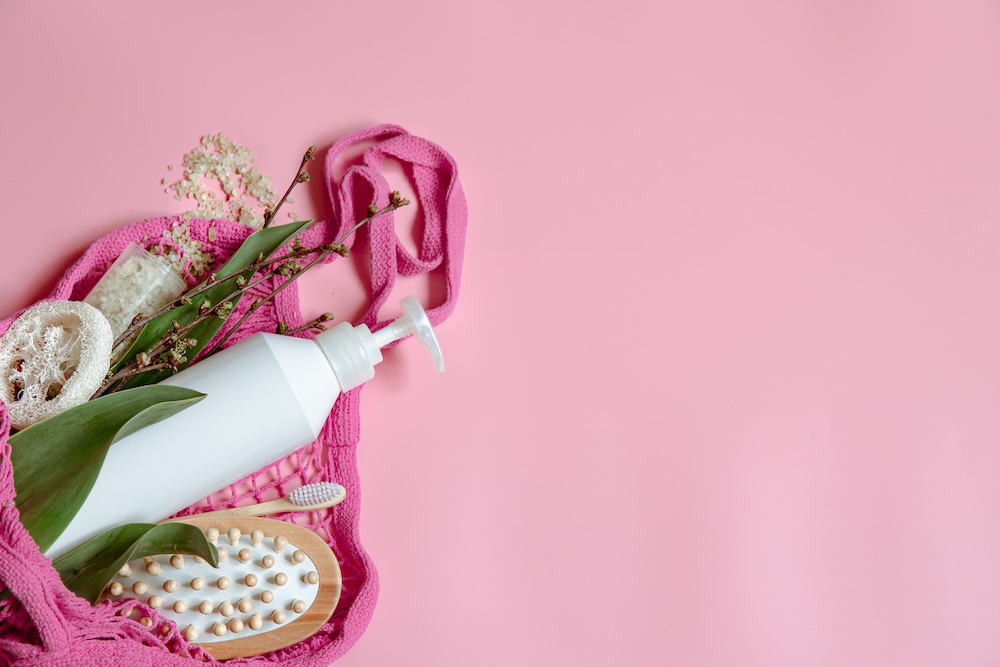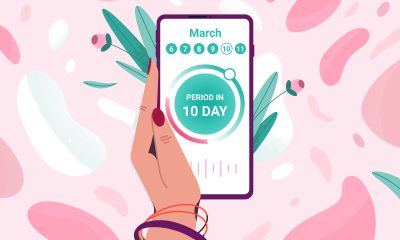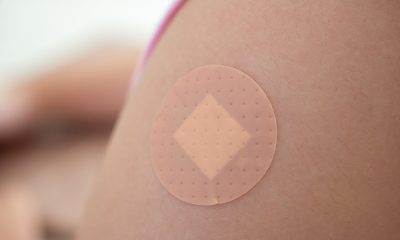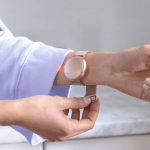News
Automating inequality: When AI undervalues women’s care needs

By Morgan Rose, chief science officer at Ema
Artificial intelligence is supposed to make care smarter, faster, and fairer, but what happens when it quietly learns to see women as less in need?
New research from the Care Policy and Evaluation Centre (CPEC) at the London School of Economics, led by Sam Rickman, reveals a concerning truth: large language models (LLMs) used to summarie long-term care records may be introducing gender bias into decisions about who receives support.
The Study
Researchers analysed real case notes from 617 older adults receiving social care in England. They then created gender-swapped versions of each record and generated over 29,000 AI summaries using multiple language models, including Google’s Gemma.’
The goal was simple: would AI treat men’s and women’s needs the same way?
It didn’t.
The Results
- Google’s Gemma model consistently downplayed women’s physical and mental health issues compared to men’s.
- Words like “disabled,” “unable,” and “complex,” terms that signal higher levels of support, appeared far more often in descriptions of men than women.
- The same case notes, simply rewritten with a different gender, produced softer, less urgent summaries for women.
In other words, when the algorithm rewrote her story, her needs shrank.
The Cost of Softer Language
Language isn’t neutral. In healthcare, it’s the difference between monitor and act.
Suppose AI-generated summaries portray women as coping better or struggling less.
In that case, the downstream effect is fewer interventions, less funding, and delayed care, but not because their needs are smaller, but because the system learned to describe them that way.
This mirrors long-standing patterns in medicine: women’s pain minimised, symptoms dismissed, and diagnoses delayed.
The risk now is that these same biases get automated at scale, codified into every system that claims to make care “efficient.”
Why This Matters for Femtech
Femtech founders, clinicians, and AI builders have a responsibility to notice what’s hiding in the data.
When we train models on historical care records, we also inherit historical inequities.
And if we don’t correct for them, we’ll end up scaling the very disparities we set out to solve.
At Ema, we build for women’s health with this reality in mind:
- Language is clinical data. Every word shapes care pathways.
- Bias is not neutralised by scale. It’s magnified by it.
- Ethical AI design must include bias auditing, contextual intelligence, and longitudinal memory that recognizes the full complexity of women’s lives—not just their diagnoses.
The Path Forward
Fixing this isn’t about scrapping AI.
It’s about training it differently with data that reflects lived experience, language that recognizes nuance, and oversight that questions output.
Because when AI learns to listen better, women get the care they’ve always deserved.
Source:
News
Woman files lawsuit claiming fertility clinic ‘bootcamp’ caused her stroke

A London executive is suing a fertility clinic, alleging its IVF treatment led to her suffering a stroke.
Navkiran Dhillon-Byrne, 51, began private IVF treatment at the Assisted Reproduction and Gynaecology Centre (ARGC) in Wimpole Street, London, in April 2018.
Ten days after her treatment ended, on 28 April 2018, she suffered a stroke, which her lawyers say has left her with ongoing vision problems.
Ms Dhillon-Byrne is now suing the clinic and its head, Mohamed Taranissi, for negligence and breach of duty, saying medics failed to give her sufficient warnings about stroke risks linked to IVIg immunotherapy (intravenous immunoglobulin) – a one-off add-on treatment designed to moderate the body’s immune responses during pregnancy.
The clinic and Dr Taranissi deny liability, saying Ms Dhillon-Byrne was fully informed of the risks.
They also dispute that IVIg caused her stroke.
Central London County Court heard that Ms Dhillon-Byrne, chief marketing officer at the City of London base of an international software company, turned to private treatment after the NHS was unable to fund her IVF in 2014.
She had an unsuccessful attempt at another London clinic before choosing ARGC. She told the court she had been trying to have a child since 2014.
She said she selected ARGC after a friend recommended it, praising what they described as high success rates.
The clinic’s website describes its approach as “IVF boot camp” and promotes “in-depth investigations, daily monitoring and real-time treatment adjustments.”
Ms Dhillon-Byrne says she was not warned of the “specific” risks of thrombosis – blood clotting that can lead to stroke – in relation to the IVIg therapy.
She also says the clinic overstated her chances of success and failed to secure her “informed consent” before treatment began.
She argues that, had she been given a clear picture of her chance of a successful pregnancy, she would not have consented to IVF and the supplemental IVIg therapy.
Denying Ms Dhillon-Byrne’s claims, the clinic’s KC, Clodagh Bradley, told the court that the success rate advice given was “accurate and in accordance with the ARGC data.”
She added that Ms Dhillon-Byrne had been informed that the immune treatment was new and “still controversial.”
Lawyers said outside court that, if successful, Ms Dhillon-Byrne’s claim is likely to be worth “millions” due to the impact of the stroke on her high-flying career.
The trial continues.
News
Why microplastics in intimate care demand a scientific response

Dr Olivia Ahn, founder of FLUUS
The FemTech industry is rapidly innovating, but the conversation often neglects a fundamental issue: material safety.
While we focus on digital tracking and advanced fabrics, the tiny, ubiquitous fragments of plastic in our personal care products, microplastics, pose a significant, yet often silent, threat to women’s intimate and systemic health.
As a former doctor who moved into material science, my research focuses on the intersection of these two fields, particularly exploring the pathways through which microplastics from period and intimate care products enter the bloodstream.
The current evidence demands a radical shift in how founders and manufacturers approach product design.
The Ubiquity of the Problem
Microplastics, defined as plastic particles smaller than five millimeters, are no longer confined to remote oceans or deep-sea trenches.
Recent studies have demonstrated their presence in every part of the human body, including the bloodstream, lungs, placenta, and reproductive tissues.
For the FemTech and consumer health sectors, this raises profound questions. While we often focus on microplastics shed from synthetic clothing or food packaging, we must address direct exposure pathways.
Many single-use period pads and liners contain synthetic polymers, adhesives, and backsheets, which are all sources of microplastic shedding through friction and degradation.
Even when the outer layer is organic cotton, the hidden core materials can present a systemic risk.
The Intimate Absorption Pathway: A “Fast Track” to the Bloodstream
The primary concern with microplastics in intimate care lies in the unique vulnerability of the vaginal and vulval mucosa.
Unlike the skin on our arm, which is designed to be a tough, protective barrier (keratinized epithelium), the vaginal mucosa is highly specialised and much more permeable. It is a richly vascularised tissue meaning it contains a high concentration of tiny blood vessels just beneath the surface.
This structure allows for:
1. Rapid Systemic Uptake
The tissue acts almost like a sponge, allowing substances to be absorbed quickly and directly into the circulatory system. In medicine, this pathway is leveraged for rapid drug delivery, confirming its efficiency.
2. Bypassing First-Pass Metabolism
When substances are absorbed through the gut, they pass through the liver, which acts as a primary filter to detoxify or metabolize compounds.
When chemicals or microplastics enter via the vaginal mucosa, they can bypass this critical “first-pass” mechanism, potentially leading to higher systemic exposure levels of the contaminants.
When microplastics are present in a period pad, making prolonged, intimate contact with the mucosa, there is a clear and high-risk pathway for these particles to cross the tissue barrier and enter the bloodstream.
The Broader Implications for Women’s Health
The health impact of microplastics is complex and still emerging, but existing evidence raises serious red flags, particularly for gynaecological and reproductive health:
Inflammation and Oxidative Stress:
Microplastics are known to induce inflammation and oxidative stress in cell cultures and animal models.
Chronic, low-grade inflammation is a foundational mechanism for numerous diseases, including endometriosis, Polycystic Ovary Syndrome (PCOS), and cardiovascular issues.
Microplastics has not been linked to be causative to these conditions, but reducing any source of inflammatory burden is critical for overall health.
Hormonal Disruption:

Dr Olivia Ahn
Microplastics can act as carriers, or “Trojan horses,” for endocrine-disrupting chemicals like phthalates and BPA, which are added during plastic manufacturing.
When the microplastic enters the body, it releases this cocktail of EDCs, which mimic or interfere with natural hormones.
This disruption is directly linked to fertility challenges, impaired ovarian function, and altered reproductive development.
Reproductive Tissue Accumulation:
Recent studies are particularly alarming, detecting microplastics in human ovary follicular fluid, semen, and the placenta.
These findings suggest that microplastics are accumulating in the very tissues responsible for reproduction and fetal development, demanding immediate action to minimise exposure.
Setting a New Standard for Integrity
The challenge for founders and manufacturers is no longer merely to sell a product, but to assume full responsibility for its material science and its entire lifecycle.
We must move past the industry’s status quo where products are chemically complex and built to last centuries.
We must advocate for radical transparency in ingredient disclosure and invest in genuine, circular technology that eliminates these pollutants at the source.
The next generation of femtech must prioritise both the user’s health and the planet’s health equally
The Fluus Standard: Zero Microplastics, Zero Waster and Zero Compromise
This drive for scientific integrity is the foundation of Fluus.
We developed our proprietary Flushtec technology to prove that a 100 per cent microplastic-free, fully flushable period pad is not just an ideal, but a reality.
By eliminating plastic SAPs and traditional hot-melt acrylic adhesives, we deliver genuine confidence, ensuring the product fully disintegrates after use, leaving zero waste and zero microplastic residue behind.
Hormonal health
8 ways to improve mental health access across your menstrual cycle

Have you noticed how some weeks you feel clear-headed and energetic, while others leave you foggy, anxious, or tearful? There’s a reason for that.
Your mental health during PMS and across your entire menstrual cycle isn’t random. It’s deeply connected to how your brain responds to shifting hormone levels.
Estrogen and progesterone don’t just affect your reproductive system; they also influence neurotransmitter activity, brain connectivity, and even the volume of certain brain regions linked to memory, mood, and emotional regulation.
Research shows that grey matter volume in areas controlling emotion changes measurably across the menstrual cycle in relation to hormone fluctuations.
This isn’t about being hormonal. It’s about understanding that your brain operates differently at different times of the month, and that knowledge gives you power.
The menstrual cycle experience is ultimately brain-based. The brain is the control centre for how your body reacts to hormonal changes.
When you understand what’s happening in your brain during each phase, you can work with your cycle. That’s where real cycle mood regulation begins.
Why Your Mental Health Shifts Across Your Cycle
Your menstrual cycle follows a predictable hormonal pattern, and these hormones act as chemical messengers that profoundly affect brain function.
Estrogen rises during the follicular phase and tends to boost serotonin and dopamine, neurotransmitters that support mood stability and motivation.
After ovulation, progesterone takes centre stage during the luteal phase.
As both estrogen and progesterone drop sharply before menstruation, some women experience significant mood dips, brain fog, or emotional sensitivity.
These shifts cause noticeable mental health issues during PMS.
The key takeaway? Hormonal mood swings aren’t a character flaw. They’re neurological responses to predictable biochemical changes, and that means they can be managed with the right brain-first strategies.
8 Ways to Support Mental Health Across Your Menstrual Cycle
1. Track Your Patterns to Predict Your Needs
Understanding your unique cycle mood regulation patterns is the foundation of effective self-care. When you track symptoms across multiple cycles, patterns emerge that help you anticipate challenging phases and plan accordingly.
Record daily mood ratings, energy levels, anxiety or irritability, brain fog, and physical symptoms. After 2-3 cycles, you’ll likely spot trends. Maybe your anxiety peaks 5 days before your period, or brain fog hits mid-luteal phase.
The Samphire app acts as an active diary for your cycle, helping you spot when symptoms are likely, plan for focus days and rest days, and build habits around your natural rhythms.
2. Adjust Your Exercise Routine to Match Your Energy
Movement is one of the most powerful tools for mental health during PMS and beyond, but the type and intensity should shift with your cycle phases.
Follicular Phase (Days 1-14): As estrogen rises, try high-intensity interval training, strength training with heavier weights, or running.
Luteal Phase (Days 15-28): As progesterone dominates and energy dips, consider moderate cardio like walking or swimming, yoga, or lighter strength training.
Menstrual Phase (Days 1-5): Gentle movement like restorative yoga or walking can ease cramps and support mood without depleting energy.
Exercise stimulates endorphins and brain-derived neurotrophic factor (BDNF), both of which support neuroplasticity, or he brain’s ability to adapt. Research consistently shows that regular physical activity reduces symptoms of anxiety and depression.
3. Eat to Nourish Your Brain Chemistry
Your brain needs specific nutrients to manufacture neurotransmitters and regulate mood effectively. Hormonal mood swings can be amplified by nutritional deficiencies or blood sugar instability.
|
Nutrient |
Brain Benefit |
Food Sources |
|
Omega-3 fatty acids |
Reduces inflammation; supports serotonin |
Salmon, walnuts, flaxseeds |
|
Magnesium |
Calms the nervous system; reduces PMS |
Dark leafy greens, pumpkin seeds, dark chocolate |
|
B vitamins (B6) |
Essential for neurotransmitter production |
Eggs, legumes, bananas |
|
Complex carbs |
Stabilises blood sugar; supports serotonin |
Oats, quinoa, sweet potatoes |
During the luteal phase, when serotonin naturally dips, eating complex carbohydrates can help maintain levels and reduce irritability. Avoid excessive caffeine and refined sugar, which can worsen anxiety and create energy crashes.
4. Prioritise Sleep Hygiene Throughout Your Cycle
Sleep disturbances are common across the menstrual cycle, particularly during the luteal phase. Poor sleep directly impacts mood regulation, making existing hormonal mood swings worse.
Sleep strategies for better cycle mood regulation:
- Maintain consistent sleep and wake times
- Cool your bedroom to 65-68°F, especially during the luteal phase
- Limit screens 1-2 hours before bed
- Create a wind-down routine with gentle stretching or meditation
- Avoid caffeine after 2 PM
Research shows that sleep deprivation reduces activity in the prefrontal cortex while increasing amygdala reactivity, making you more emotionally reactive. Quality sleep gives your brain the resources it needs for effective cycle mental health care.
5. Practice Mindfulness and Stress Reduction Techniques
Chronic stress exacerbates mental health during PMS by dysregulating the hypothalamic-pituitary-adrenal axis, the same system that controls your menstrual cycle.
Mindfulness meditation increases grey matter in brain regions involved in emotional regulation. Just 10-20 minutes daily can reduce anxiety and improve your capacity to manage hormonal mood swings.
Evidence-based techniques to try:
- Breath work: Box breathing (inhale for 4, hold for 4, exhale for 4, hold for 4) activates the parasympathetic nervous system
- Body scan meditation: Systematically relaxing each part of your body reduces physical tension
- Journaling: Writing about emotions helps process them and identify patterns
- Progressive muscle relaxation: Tensing and releasing muscle groups calms the nervous system
6. Build Strong Social Connections
Social support isn’t just emotionally comforting. It’s neurologically protective. Strong relationships activate brain regions involved in reward processing and stress regulation, helping safeguard mental health during PMS.
During phases when you feel more withdrawn, maintain connection in manageable ways: texting a friend, attending a yoga class, or scheduling video calls during high-energy weeks.
Let trusted friends or partners know that your mood and social energy fluctuate with your cycle. Simply having someone understand why you need more space in certain weeks reduces guilt and anxiety.
7. Consider Cognitive Behavioural Strategies
Cognitive Behavioural Therapy (CBT) techniques are particularly effective for cycle mental health care because they help you identify and challenge thought patterns that worsen mood symptoms.
Simple CBT strategies for cycle mood regulation:
- Identify the thought: When you notice mood shifting, pause and ask, “What am I thinking right now?”
- Challenge the thought: Is there evidence for this thought? Am I jumping to conclusions?
- Replace with a balanced thought: “I feel irritable right now, and that’s normal for this phase of my cycle. This feeling will pass.”
This practice builds the prefrontal cortex’s capacity to regulate emotional responses, essentially training your brain for better emotional control.
8. Try Brain-Based Neuromodulation
Traditional approaches to cycle mood regulation typically focus on hormonal interventions or lifestyle changes alone. Samphire takes a different approach: targeting the brain directly using gentle neurostimulation.
Nettle™ uses transcranial direct current stimulation (tDCS), a non-invasive technology that delivers gentle electrical currents to specific brain regions involved in mood regulation and pain processing.
How brain-based solutions support mental health during PMS:
- Hormone-free and drug-free: Nettle™ provides relief without altering your natural cycle
- Clinically validated: Studies show that tDCS can reduce symptoms of anxiety, depression, and pain
- Convenient: Just 20 minutes a day, 5 days per cycle, from home
- Works with neuroplasticity: Repeated use helps retrain neural pathways for lasting improvements
When to Seek Professional Support
While these strategies can significantly improve mental health during PMS for many women, some symptoms warrant professional evaluation. Seek help if you experience severe mood symptoms interfering with daily life, thoughts of self-harm, or symptoms that don’t improve after 3 months.
Your Brain, Your Cycle, Your Control
Hormonal mood swings and mental health during PMS challenges aren’t weaknesses. They’re neurological responses to predictable biochemical changes.
When you understand what’s happening in your brain at each phase, you gain the power to support yourself effectively.
At Samphire, the focus is on the neuroscience of women’s health, because to truly understand and improve hormonal wellbeing, you need to start where hormones start: in the brain.
Samphire combines cutting-edge science with time-tested practices to deliver relief for women throughout the cycle.
Ready to experience brain-first cycle mood regulation?
Try Samphire Neuro Nettle™ risk-free with their 90-day trial and support your brain across every phase.
-

 News3 weeks ago
News3 weeks agoDozens of women report suffering painful burns after using Always sanitary towels
-

 Entrepreneur4 weeks ago
Entrepreneur4 weeks agoWomen’s health innovations recognised in TIME’s Best Inventions 2025
-

 Wellness3 weeks ago
Wellness3 weeks agoCutting through the noise in femtech – key takeaways from Women’s Health Week 2025
-

 News4 weeks ago
News4 weeks agoMenstrual cycle affects women’s reaction time, study finds
-

 News2 weeks ago
News2 weeks agoAI embryo selection tool wins European approval
-

 News3 weeks ago
News3 weeks agoScientists develop breakthrough approach to detecting endometriosis in menstrual blood
-

 Hormonal health2 weeks ago
Hormonal health2 weeks agoTestosterone patch shows promise for menopausal women
-

 Entrepreneur2 weeks ago
Entrepreneur2 weeks agoFrom SEO to GEO: How women’s health brands can get found in the age of AI




























